Friday, April 11, 2008
posted by Steve Tompkins

Any given year is a demonstration of mortality in action, but so far 2008 has been especially hellbent on inaugurating the afterlives of figures who had permanent luxury suites in the Tompkinsian pantheon: George MacDonald Fraser, Arthur C. Clarke, Robert Fagles, and now Charlton Heston.
No sooner was I surfing the first wave of obituaries and career summaries than I was muttering and cursing. Everything else Heston did was being reduced to flotsam bobbing atop each half of the parted Red Sea, or dust beneath Judah Ben-Hur’s chariot wheels. It’s difficult to be objective about those movies because they became the Easter season equivalent of the Yule log, always on the TV screen in the background. When I try to watch either, it isn’t long before I wish someone had spiked the holy water. Oh, Ben-Hur retains some interest because of the involvement of Gore Vidal, Yakima Canutt, and a young assistant director named Sergio Leone, and the early scenes at the Egyptian court in The Ten Commandments are entertaining, mostly because of Yul Brynner’s seething Ramses (had he not gotten all that emoting out of his system, would he ever have been able to play the robot gunfighter in Westworld?) But I prefer Heston’s mid-career parts, when cracks in the Michelangelo-sculpted marble and verdigris on the gleaming bronze began to be detectable, so I was glad to find Manohla Dargis’ “The Man Who Touched Evil and Saved the World” in the New York Times: “My fondness for Mr. Heston can be traced back to the films I saw growing up, most important, his great dystopian trilogy, Planet of the Apes (1968), The Omega Man (1971), and Soylent Green (1973).” Had Ms. Dargis bethought her of how Beneath the Planet of the Apes (1970) ends, she might have reconsidered the second half of her tribute’s title, but I’m with her on the Dominus of Dystopia; whenever I read Howard’s “The Last Laugh” (an overheated discussion of which concludes an essay printed in TC V5n1), despite the probable Conanomorphism of the protagonist’s appearance, I imagine Charlton Heston, the last word in last stands and the first choice for the day after the end of the world.
(Continue reading this post)
Wednesday, March 12, 2008
posted by Leo Grin
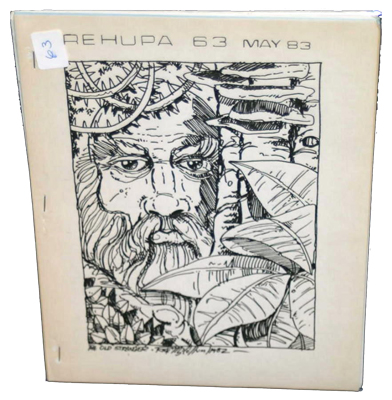
I haven’t gotten around to auctioning off the rest of my REHupa collection yet — confound it! — but Mark Corrinet is now getting rid of the numerous extra copies he was forced to purchase when building his own collection. Up on eBay right now are four really hard-to-find issues, numbers 63, 64, 83, and 94, all dating back over twenty years. If you’ve ever wanted to acquire some of these, now is a rare chance to do so. My own earliest copies are in the #90s and #100s, so there’s no overlap with Mark’s first batch here. Get ’em while you can, or you may never have another opportunity. You’ve been warned.
Sunday, March 2, 2008
posted by Leo Grin
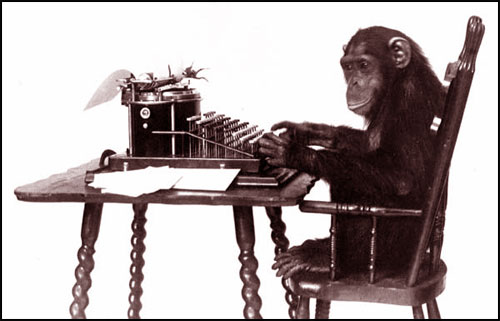
Just a quick note to those of you digging into the new issue: on page 18 of Steve’s essay appears the following quote from the REH story “Wild Water”:
Now he could see the headlights glinting through the trees like a pair of angry eyes. The eyes of the Law, he thought sardonically, and hugged himself with venomous glee.
Unfortunately Steve’s follow-up line, “The throwback has been thrown forward, into a dispiriting present that barely masks a dystopian future,” was inadvertently formatted to look like a part of the REH quote rather than separate from it. So when you hit that line, make the necessary mental adjustment. “The throwback…” is Steve talking, not REH.
Friday, February 29, 2008
posted by Steve Tompkins
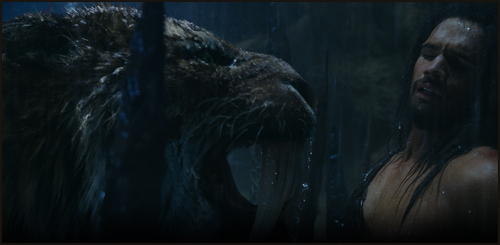
Great and terrible flesh-eating beasts have always shared landscape with humans. They were part of the ecological matrix within which Homo sapiens evolved. They were part of the psychological context in which our sense of destiny as a species arose. They were part of the spiritual systems that we invented for coping. The teeth of big predators, their claws, their ferocity and their hunger, were grim realities that could be eluded but not forgotten. Every once in a while, a monstrous carnivore emerged like doom from a forest or river to kill someone and feed on the body. It was a familiar sort of disaster–like auto fatalities today–that must have seemed freshly, shockingly gruesome each time, despite the familiarity. and it conveyed a certain message. Among the earliest forms of human self-awareness was the awareness of being meat.
That’s from David Quammen’s memorable-if-not-haunting 2003 Monster of God: The Man-Eating Predator in the Jungles of History and the Mind, a meditation on how “the alpha predators, and the responses they evoke, have transcended the physical dimension of sheer mortal struggle, finding their way also into mythology, art, epic literature, and religion.” One of the alpha-est predators, arguably the iconic carnivore of the Cenozoic Era, is figuring very prominently indeed in the trailers and promos for the March 7 release 10,000 B.C., directed by Roland Emmerich: Smilodon, the sabre-tooth tiger. Aficionados of Nature red in tooth and claw hope the film’s CGI and editing create charismatic killer cats that surpass Ray Harryhausen’s stop-motion sabre-tooth in Sinbad and the Eye of the Tiger and reclothe the animal in the dignity that was shed with the Denis Leary-voiced Diego in Ice Age and Ice Age 2. In honor of the occasion, I’d like to pay tribute to the two foremost mega-felines in all of modern fantasy, the gliding, pouncing juggernauts of Robert E. Howard’s “Beyond the Black River” and Karl Edward Wagner’s “Two Suns Setting.”
(Continue reading this post)
Friday, February 29, 2008
posted by Leo Grin
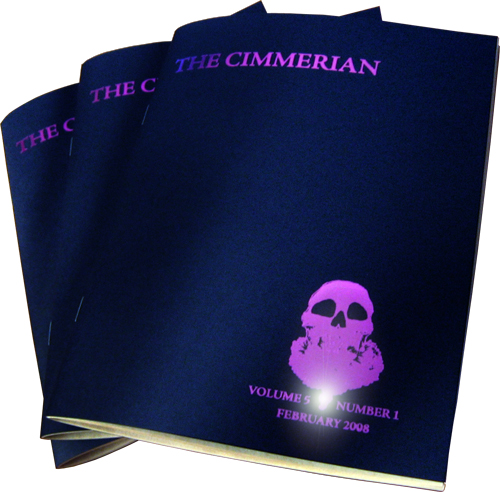
The February 2008 issue has shipped to subscribers. For a sneak peek at all of the treasures contained within, go here.
Amethyst is the color this year, a sort of royal gemstone purple that shimmers nicely under a reading lamp. Our artist for the forthcoming annum is Ms. Socar Myles of Vancouver, British Columbia, whose macabre talents can be gleaned at her website.
Slipcases for both V4 and V5 will be ready soon (price: $50 ea.), along with much else. Stay tuned to The Cimmerian Blog for details.

Monday, February 18, 2008
posted by Leo Grin
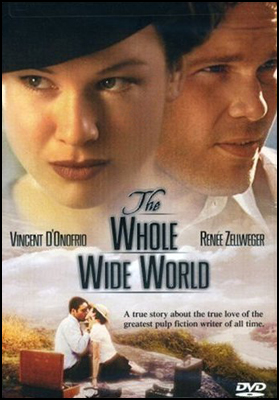
British Cimmerian reader Chris Green offers up the following news tidbit for REH completists on this side of the pond:
Just thought I would let you know that the first ever U.K. DVD release of The Whole Wide World just went on sale today, Feb 18. It’s available from Amazon U.K. The movie never received a theatrical release over here and Howard fans simply had to make do with taped versions from the handful of TV showings which turned up at (very) odd times. Maybe REH completists might like to know of this potential acquisition. It’s a shame there’s no extras or commentary, though, especially as the case depicts what appears to be a deleted scene.
So this release at 107 minutes is comparable to the US release currently in general circulation at 106 minutes, albeit without the commentary and extras. Someday we’ll get a deluxe edition with the deleted scenes (of which there are more than have ever been seen on any format — Michael Scott Myers once told me that the long scene filmed with REH and Novalyne arguing about racism is a real highlight).
Friday, February 8, 2008
posted by Leo Grin
For those who haven’t heard, the Random House website (and Amazon) are both listing this as being released on October 28, 2008. The book is set to have 400 pages and sell for a retail price of $18. No word on whether it will be illustrated and/or by whom, or what the final contents will be.
UPDATE: Horror Stories editor Rusty Burke writes in to correct the Random House website: “Want to nip a potential problem in the bud. Don’t know why the Random House site has complete horror stories listed, because from day one my title for the book has been The Mad Immensities of Night: Selected Horror Stories and Verse by Robert E. Howard. The book probably includes at least three-quarters of REH’s horror fiction, but does not include *everything* and I would not want someone to buy it thinking it does. As it stands, we have just over 500 pages of REH content alone, so it’s a big book, like the Best Ofs. I’ve written to my editor at Del Rey to see about getting the title on the webpage (which was probably just a “filler”) corrected.”
AND FOR THE RECORD: Conan the Phenomenon (p. 139) calls this book simply Robert E. Howard’s Horror Stories — no Complete, but no Selected either. Phenomenon also says that Greg Staples is set to illustrate it (an English comic book artist who also has done some concept art for the forthcoming Solomon Kane film).
Thursday, February 7, 2008
posted by Leo Grin
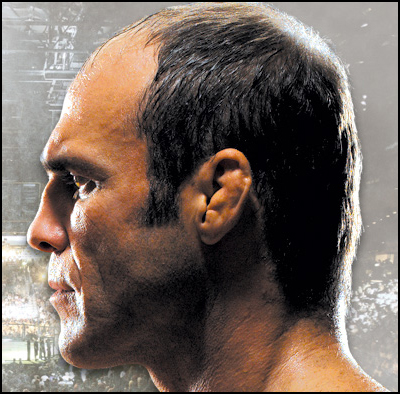
cauliflower ear
noun
1. An ear that is swollen, hardened, and deformed from extravasation of blood following repeated blows, resulting in an irregular thickening of scar tissue. Common among boxers.
[Origin: 1905-10, Americanism]
HOWARD’S USAGE:
He was hairy and his muscles swelled like iron all over him, miner’s style, and his naturally hard face hadst not been beautified by a broken nose and a cauliflower ear. Altogether, Biff looked like what he was — a rough and ready fighting man.
[from “Texas Fists”]
Friday, January 25, 2008
posted by Leo Grin
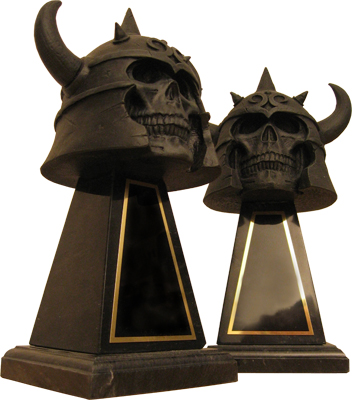
Fred “Is He Dead?” Thompson has drifted back into blissful Hollyweird somnolence, and the Big Giant Head has recalled Dennis “The Menace” Kucinich back to Planet Zongo, but lots of Howardians are still out there stumping for votes in the 2008 Cimmerian Awards. There’s only a week left to cast your ballots for your favorite REH books, magazines, websites, and scholars of the past year, so hurry and don’t miss out on your inalienable right to cause trouble and heartbreak in the Howard Nation. Remember, if you don’t participate in the democratic process, you’re a part of the problem. Rock that vote!
Tuesday, January 15, 2008
posted by Leo Grin

Steve Eng, known to many Cimmerian readers for his epic survey of Robert E. Howard’s poetry in The Dark Barbarian, has a new book of his own verse out. Titled The Defrauding of the Worms: Thirty Years of Poetry, it is the first in a projected four volumes that will collect the poems of Eng, who of late is incapacitated by Primary Progressive Aphasia (causing dementia and loss of memory). This book contains around two hundred items, including some that are about REH, so Howard fans have good reason to seek it out aside from a general love for solid versifying.














